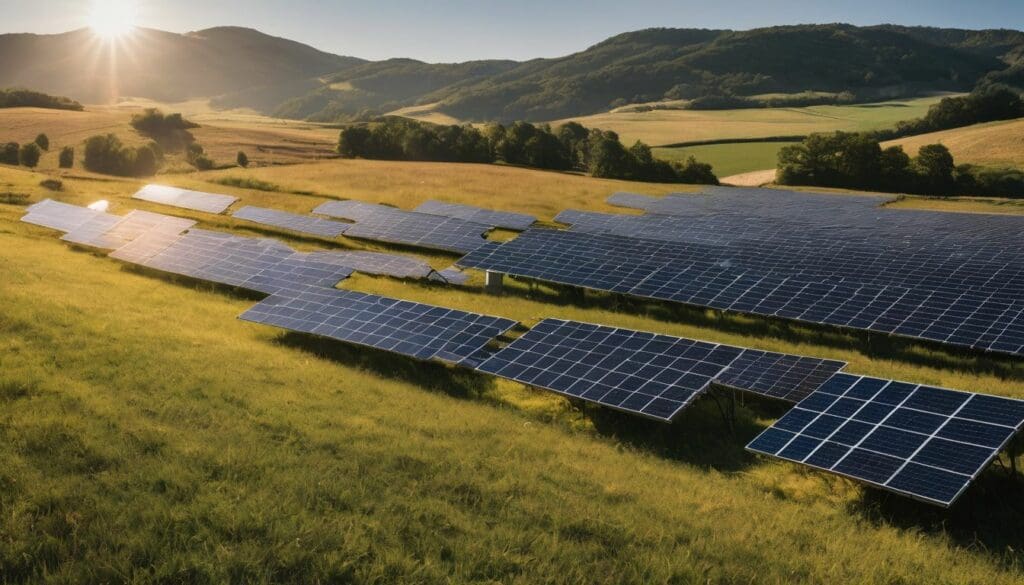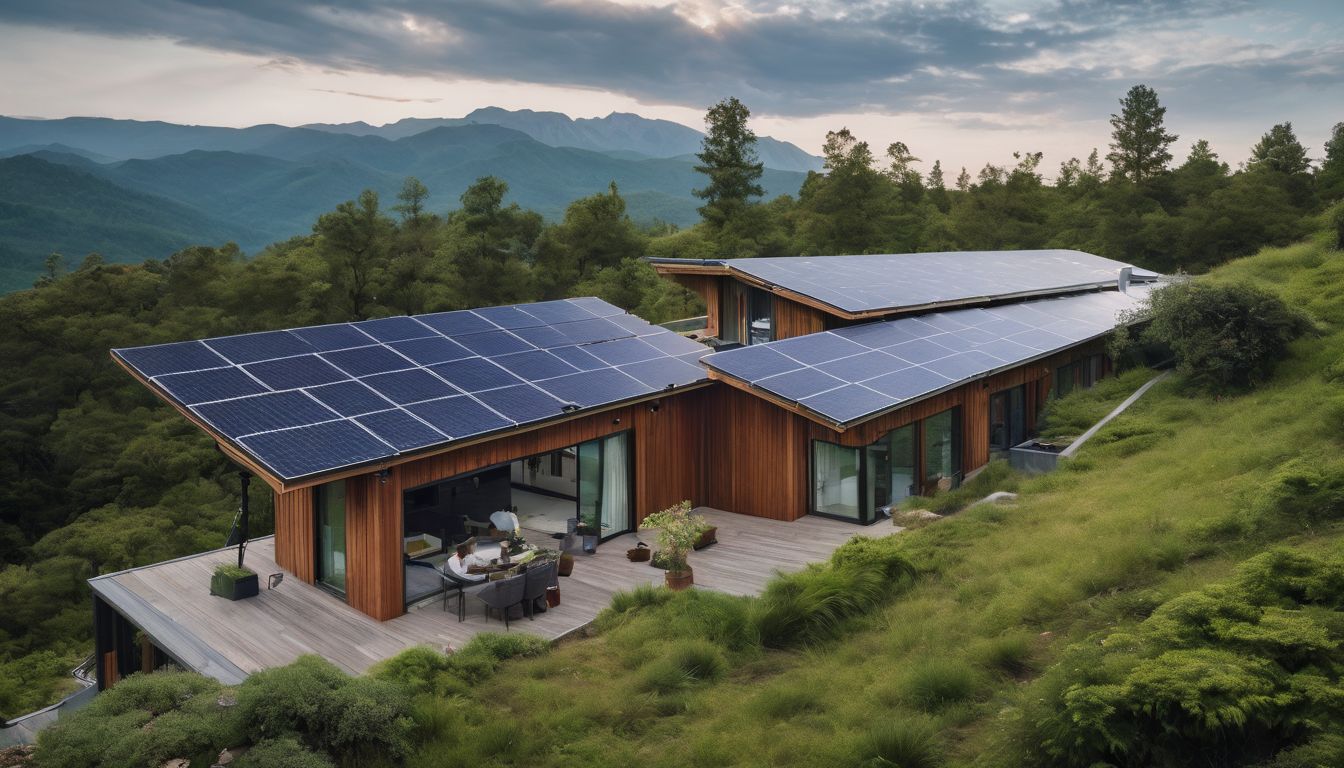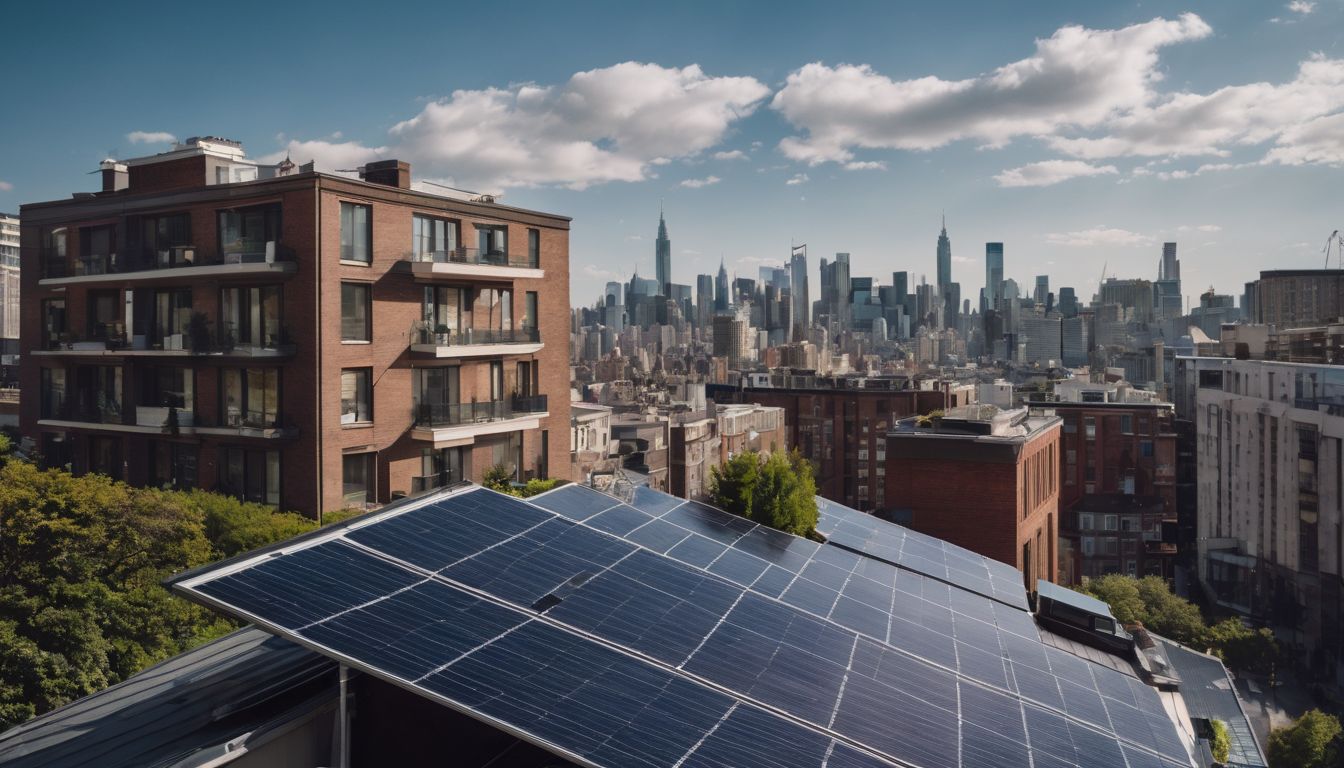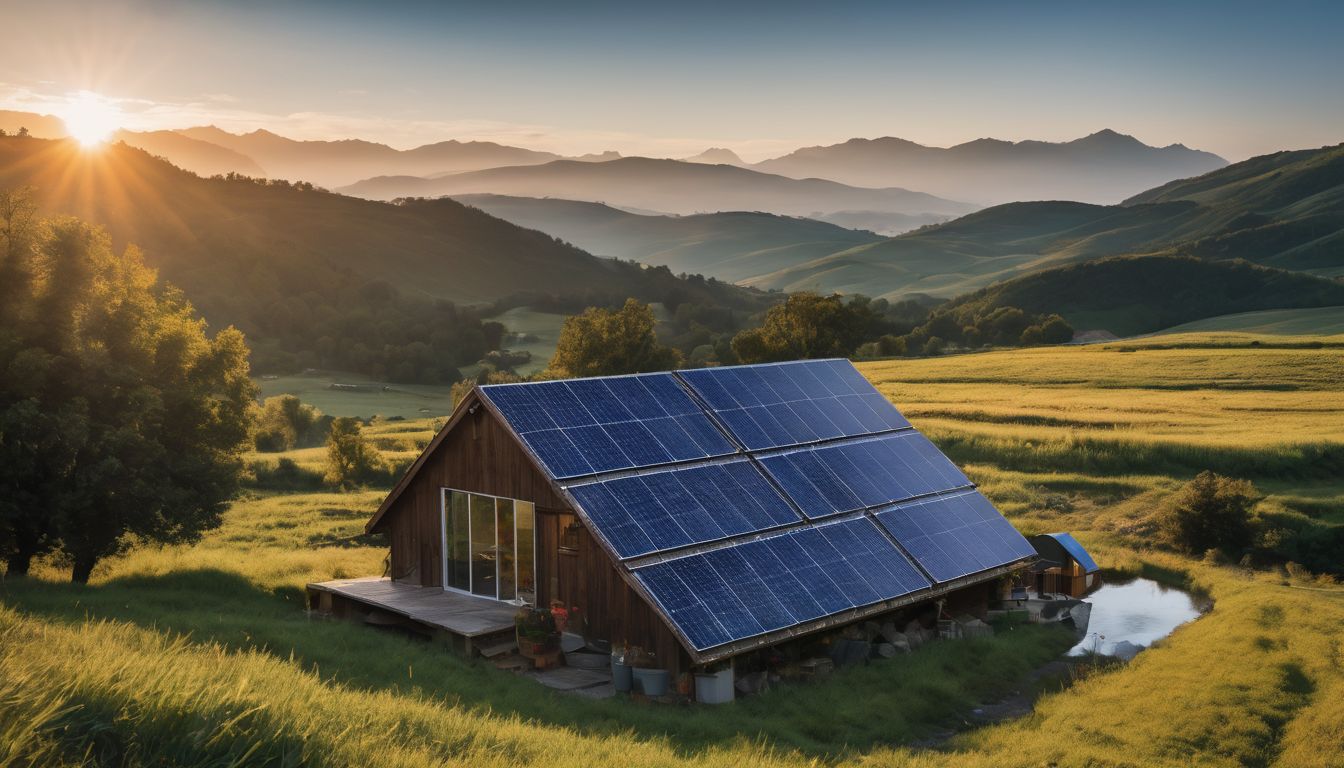Are you wondering how we can power our lives without harming the planet? By the end of 2021, solar energy had surged to a colossal 8% of the global electricity generation mix. Our blog will dive into the rays of solar power growth globally and explore what’s driving this sunny revolution.
Discover why your future could be brighter with solar!
Key Takeaways
- Solar PV technology is leading the charge in renewable electricity capacity additions globally, with its rapid growth essential for the transition to a clean energy future.
- Streamlined permitting processes and balanced policies are critical to support both utility – scale systems and distributed PV, contributing to solar energy’s accessibility and affordability.
- Investment in technological innovation, quality control, and sustainable manufacturing practices is driving efficiency and reducing costs in solar panel production.
- Diverse supply chains for solar panels are necessary to secure a stable transition towards net zero emissions while managing potential supply chain vulnerabilities.
- Off – grid electrification systems play a vital role in bringing sustainable energy solutions to remote areas, supporting economic development and improved living standards.
Importance of Solar PV in Clean Energy Transitions
Solar PV plays a crucial role in reducing reliance on fossil fuels and tackling climate change. Its adoption is essential for a sustainable and clean energy future.
Its role in reducing reliance on fossil fuels
Harnessing the sun’s power through photovoltaic technology offers a limitless supply of energy that directly reduces our dependence on fossil fuels. Every watt produced by solar panels means less coal or gas burned in power stations, cutting down greenhouse gas emissions and diminishing air pollution.
As households and businesses install more solar systems, the demand for traditional energy sources plummets, transforming our energy mix towards a cleaner future.
Renewable electricity technology like solar is key to sustainable development. With advances in green technology, storing solar energy has become more efficient, allowing even cloudy regions to benefit from this clean source.
This shift not only bolsters energy security but also drives innovation within the renewable resources sector. The expansion of the global photovoltaic market underlines society’s burgeoning commitment to alternative energy solutions that help heal our planet while powering it forward.
Its contribution to tackling climate change
Solar energy plays a crucial role in tackling climate change by reducing reliance on fossil fuels and lowering greenhouse gas emissions. With solar photovoltaic (PV) technology, renewable electricity capacity additions have significantly increased, contributing to the global transition towards cleaner energy sources.
The expansion of solar PV power generation aligns with the Net Zero Scenario, supporting the shift towards sustainable and environmentally friendly energy production. As technology deployment and manufacturing continue to advance, the solar industry’s growth is propelling innovation for a more sustainable future.
The contribution of solar energy to tackling climate change underscores the significance of supporting renewable energy adoption. Addressing potential supply chain vulnerabilities ensures a secure transition to net-zero emissions, emphasising the need for diverse solar panel supply chains.
The continued expansion of the solar industry offers promising opportunities for promoting conservation and environmental sustainability.
Global Trends in Solar Energy Adoption
The global trends in solar energy adoption are driven by the increasing capacity additions of renewable electricity, particularly in the solar PV segment. This is further supported by advancements in technology deployment and manufacturing, making solar energy a key player in the transition to a clean energy future.
Renewable electricity capacity additions by technology and segment
Renewable energy continues to play a crucial role in our transition towards a sustainable future. Among various technologies, solar PV stands out as one of the fastest-growing sectors. Below is a table showcasing renewable electricity capacity additions by technology and segment:
| Technology | Utility-Scale Segment | Distributed Segment | Total Additions |
|---|---|---|---|
| Solar PV | 70% | 30% | 100% |
| Wind | 85% | 15% | 100% |
| Hydropower | 90% | 10% | 100% |
| Bioenergy | 60% | 40% | 100% |
| Geothermal | 80% | 20% | 100% |
| Others | 50% | 50% | 100% |
Solar PV leads the way in both utility-scale and distributed segments, reflecting its versatility and growing accessibility. This dynamic growth underscores its significant potential in shaping our clean energy future.
Solar PV power generation and capacity in the Net Zero Scenario
Solar PV power generation and capacity play a pivotal role in achieving the Net Zero Scenario. Solar technology harnesses sunlight to generate electricity, significantly reducing carbon emissions.
The rapid growth of solar energy capacity is essential for meeting the increasing global energy demand while curbing environmental impact. As the solar industry continues to expand, it becomes more integral in driving sustainable energy transitions worldwide.
In the path towards net zero emissions, solar PV power generation exemplifies innovation and progress within the renewable energy landscape. Its continuous development contributes to a cleaner and more sustainable future, aligning with efforts to combat climate change and secure reliable energy sources for generations to come.
Technology deployment and manufacturing
Transitioning from solar power generation to the manufacturing component, let’s delve into the vital aspects of technology deployment and manufacturing in the solar energy sector.
- Enhancing production efficiency: Streamlining manufacturing processes helps to lower costs and improve the overall efficiency of solar panel production.
- Innovations in materials: Research into advanced materials for solar panels contributes to increasing their durability and performance, ensuring a longer lifespan for solar installations.
- Automation in manufacturing: Implementing automation technologies in production lines can significantly reduce human error and increase output capacity, leading to more cost-effective and rapid production.
- Quality control measures: Stringent quality control protocols are essential in maintaining high standards of solar panel manufacturing, ensuring consistent product reliability and performance.
- Scale-up initiatives: Encouraging large-scale production investments drives down costs through economies of scale, making solar energy more accessible and affordable for consumers.
- Sustainable practices: Integrating environmentally friendly practices within the manufacturing process minimises waste and reduces the carbon footprint of solar panel production.
- Research and development: Ongoing R&D efforts drive technological advancements that enhance the efficiency and affordability of solar panel technology, promoting continuous industry growth.
- Skilled workforce training: Investing in training programmes for workers involved in solar panel manufacturing ensures a proficient workforce capable of meeting industry demands while also supporting job creation within this renewable energy sector.
Policies and Strategies to Support Solar Energy Adoption
Facilitating permitting for utility-scale systems and establishing a balanced policy environment for distributed PV are crucial steps in supporting solar energy adoption. Additionally, supporting the adoption of off-grid electrification systems is essential to ensure widespread access to clean energy.
Facilitating permitting for utility-scale systems
- Enhancing Permitting Procedures: Implementing efficient and transparent procedures for obtaining permits supports the timely development of utility-scale solar energy projects.
- Collaboration with Regulatory Authorities: Engaging with regulatory bodies and local authorities can help in understanding and addressing their concerns regarding large-scale solar installations, thereby expediting the permitting process.
- Community Engagement: Involving local communities in the planning and development stages of utility-scale solar projects fosters cooperation and support, leading to smoother permitting processes.
- Environmental Impact Assessment: Conducting comprehensive environmental impact assessments ensures that utility-scale solar projects adhere to sustainability standards, thus expediting permitting procedures.
- Streamlining Interconnection Processes: Simplifying interconnection processes between utility-scale solar installations and the grid is crucial for reducing bureaucratic hurdles in obtaining permits.
- Advocating Policy Reforms: Advocating for policy reforms that prioritise renewable energy development can contribute to creating a conducive environment for expediting permitting for utility-scale systems.
Establishing a balanced policy environment for distributed PV
To support the growth of solar energy, policies should be designed to create a balanced environment for distributed PV. This can be achieved through:
- Streamlining permitting processes to facilitate the installation of small-scale solar systems, making it easier for individuals and communities to adopt solar energy.
- Providing financial incentives and rebates to make distributed PV more accessible and affordable, encouraging wider adoption.
- Implementing net metering policies that allow homeowners and businesses to sell excess solar power back to the grid, promoting investment in distributed PV systems.
- Developing comprehensive regulations that ensure safety, quality, and performance standards are met for all distributed PV installations.
- Collaborating with utilities to establish fair compensation structures for solar energy generation by distributed systems, ensuring equitable treatment for all participants in the solar market.
Supporting the adoption of off-grid electrification systems
- Encouraging the use of off-grid solar power for electricity needs in remote communities helps reduce reliance on traditional, non-renewable energy sources, contributing to global efforts in combating climate change.
- Investing in off – grid electrification systems offers opportunities for economic development and improved living standards in underserved areas, empowering communities with access to clean, reliable energy.
- Implementing policies and financial incentives to facilitate the deployment of off-grid solar solutions can accelerate the transition towards sustainable energy practices, fostering a more environmentally conscious approach to power generation.
- Promoting the adoption of efficient off – grid electrification technologies supports conservation efforts by minimising environmental impact and promoting responsible energy consumption in remote regions.
The Need for Diverse Solar Panel Supply Chains
Ensuring a diverse supply chain for solar panels is essential for a secure transition to net zero emissions and addressing potential vulnerabilities. To learn more about the global trends in solar energy adoption, continue reading our blog.
Ensuring a secure transition to net zero emissions
To ensure a secure transition to net zero emissions, it is crucial to invest in renewable energy sources such as solar power. By diversifying energy sources and promoting the adoption of solar panels, we can reduce reliance on fossil fuels and decrease carbon emissions.
Encouraging the development of solar technology and supporting innovation in the solar industry will play a significant role in achieving global clean energy goals.
Promoting policies that facilitate the widespread adoption of solar energy, alongside fostering diverse supply chains for solar panels, will contribute to creating a more resilient and sustainable energy landscape.
Addressing potential supply chain vulnerabilities
Ensuring a diverse and resilient solar panel supply chain is crucial for supporting the global transition to net zero emissions. By diversifying the sources of critical components such as silicon, inverters, and batteries, the solar energy industry can reduce its vulnerability to potential disruptions.
This will bolster the stability of solar power generation and ensure that environmentally conscious individuals can rely on clean energy without concerns about supply chain bottlenecks or shortages in essential materials.
Establishing strategic partnerships across different regions for sourcing raw materials and components is essential for mitigating supply chain risks in the solar industry. Additionally, investing in local manufacturing capabilities can enhance self-sufficiency while creating job opportunities within communities.
Conclusion
In conclusion, solar energy adoption is rapidly increasing globally. The renewable electricity capacity additions and technology deployment show a promising future for the solar industry.
Policies and strategies play a crucial role in supporting the widespread use of solar energy, while ensuring diverse supply chains will secure a sustainable transition to net zero emissions.
With these trends, the solar industry is poised for substantial growth and innovation in the coming years.
FAQs
1. What are the current global trends in solar energy adoption?
Global trends show a significant growth in solar industry expansion with renewable electricity technology, particularly distributed energy systems, becoming increasingly popular.
2. How is the solar energy landscape changing?
The solar energy landscape is evolving with rapid innovation and increased market analysis efforts by solar power firms to meet the rising demand for clean energy sources.
3. Are there new technologies emerging in the solar industry?
Yes, there’s ongoing research leading to cutting-edge solar energy technology developments that promise more efficient use of sunlight for electricity generation.
4. What does recent research say about the future of the solar industry?
Solar industry research indicates continued expansion due to technological advancements and growing awareness of renewable energy benefits among consumers and businesses alike.
5. Is there a rise in investment within the solar energy market?
Investment in the global renewable energy trends, especially within the solar market trend sphere, has been rising as investors recognise its potential for long-term sustainable growth.





